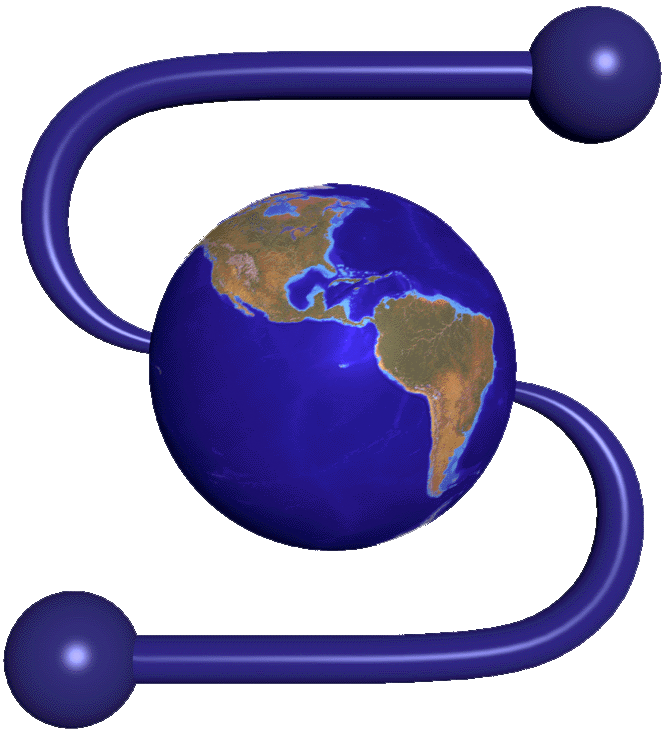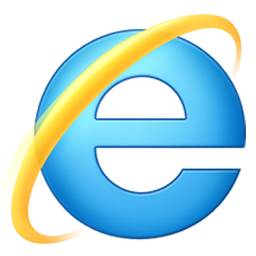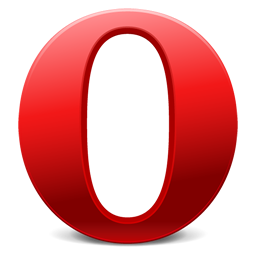Once upon a time in the Web...
Once upon a time in the Web...
The world wide web!
What is the world wide web? Basically it's a giant network of pages and resources identified and linked thanks to URLs. The Web is one application of the Internet. You should make the difference between the two, they're not the same. Internet existed long before. It was already used to do email, chat etc...
Let's see how it works. When you visit a regular web site it's a 2-step action. Your web browser sends an HTTP request through the Internet to a web server. The web server sends back an HTTP response to the web browser. This response is a web page and may contain HTML, CSS and JavaScript. Many other types of multimedia resources can be served. Let's how the web became was it is today!
A long time ago...
Tim Berners-Lee  while working at CERN invented the World Wide Web around 1990. The Internet was already here but not from much. He created the HyperText Transfer Protocol (HTTP), the HyperText Markup Language (HTML), the first web browser (WorldWideWeb) and the first web server (CERN HTTPd) using a NeXTcube computer. His colleague Robert Cailliau helped him during this historical period.
while working at CERN invented the World Wide Web around 1990. The Internet was already here but not from much. He created the HyperText Transfer Protocol (HTTP), the HyperText Markup Language (HTML), the first web browser (WorldWideWeb) and the first web server (CERN HTTPd) using a NeXTcube computer. His colleague Robert Cailliau helped him during this historical period.
Mosaic
 Released in 1993, Mosaic was one of the first popular web browser for general public thanks to its clean graphical user interface. It was originally designed and programmed by Marc Andreessen and Eric Bina for National Center for Supercomputing Applications (NCSA). First version supported Unix's X Window System. Windows and Macintosh ports came just after.
Released in 1993, Mosaic was one of the first popular web browser for general public thanks to its clean graphical user interface. It was originally designed and programmed by Marc Andreessen and Eric Bina for National Center for Supercomputing Applications (NCSA). First version supported Unix's X Window System. Windows and Macintosh ports came just after.
Netscape navigator
 Marc Andreessen then co-created Mosaic Communications which was quickly renamed Netscape Communications for legal issues. The company released the first version of Netscape navigator in late 1994. Even if Marc developed Mosaic, Netscape was developped from scratch. Internal name of Netscape navigator was Mozilla : "Mozaic Killer".
Marc Andreessen then co-created Mosaic Communications which was quickly renamed Netscape Communications for legal issues. The company released the first version of Netscape navigator in late 1994. Even if Marc developed Mosaic, Netscape was developped from scratch. Internal name of Netscape navigator was Mozilla : "Mozaic Killer".
W3C
 It's a standard organization founded by Tim Berners-Lee in 1994 after he left the CERN. It was created to ensure long term growth of the Web and its standards. W3C currently manages specifications for HTML, XHTML, XML, CSS, PNG, SVG...
It's a standard organization founded by Tim Berners-Lee in 1994 after he left the CERN. It was created to ensure long term growth of the Web and its standards. W3C currently manages specifications for HTML, XHTML, XML, CSS, PNG, SVG...
CSS
At the time, web presentation possibilities were thin. The idea to separate structure from presentation was a need. In the end of 1994, nine stylesheet languages were proposed to the W3C mailing list. Two were chosen as the foundation of what would become CSS. Håkon Wium Lie  who currently works for Opera Software proposed CHSS and Bert Bos proposed Stream-based Style Sheet Proposal (SSP). The two worked together and by the end of 1996, CSS was ready to become official.
who currently works for Opera Software proposed CHSS and Bert Bos proposed Stream-based Style Sheet Proposal (SSP). The two worked together and by the end of 1996, CSS was ready to become official.
JavaScript
In 1995, Brendan Eich  developped the language for Netscape Communications. The project name changed twice : Mocha then LiveScript and then JavaScript (because of Sun Microsystems partnership with Netscape). JavaScript is not related to Java!In November 1996, Netscape submitted JavaScript to Ecma International, a standard organization. Work resulted in the standardized version named ECMAScript.
developped the language for Netscape Communications. The project name changed twice : Mocha then LiveScript and then JavaScript (because of Sun Microsystems partnership with Netscape). JavaScript is not related to Java!In November 1996, Netscape submitted JavaScript to Ecma International, a standard organization. Work resulted in the standardized version named ECMAScript.
Internet explorer
 In 1994, Microsoft aquired NCSA Mosaic source code (property of Spyglass). They modified it, renamed it to Internet Explorer and released it in august 1995. Thanks to windows market share IE won the first browser war and reached 95% of users in 2002. They developped their own rendering engine known as Trident and the latest version of the javascript engine is called Chakra.
In 1994, Microsoft aquired NCSA Mosaic source code (property of Spyglass). They modified it, renamed it to Internet Explorer and released it in august 1995. Thanks to windows market share IE won the first browser war and reached 95% of users in 2002. They developped their own rendering engine known as Trident and the latest version of the javascript engine is called Chakra.
Microsoft invented the iframe in 1997. Use it carefully.
As part of Outlook Web Access, Microsoft originally created the XMLHttpRequest in 2000, needed for every AJAX call.
Opera
 In 1996, Opera software released the first public version (2.0) of Opera. Opera is known for its focus on standards. Their rendering engine Presto and their javascript engine Carakan are home made and proprietary. It suffered from an add banner until 2005. Opera never had a big market share on desktops but was one of the early actors on mobile phones, before the smartphone apps era. It is more of an internet tool suite, it includes an email client, a BitTorrent client, an IRC client...
In 1996, Opera software released the first public version (2.0) of Opera. Opera is known for its focus on standards. Their rendering engine Presto and their javascript engine Carakan are home made and proprietary. It suffered from an add banner until 2005. Opera never had a big market share on desktops but was one of the early actors on mobile phones, before the smartphone apps era. It is more of an internet tool suite, it includes an email client, a BitTorrent client, an IRC client...
Safari
 On January 2003, Apple announced Safari 1. It uses WebKit the rendering engine of KHTML. Their JavaScript engine is called Nitro. In 2007, the company made a mobile version of their own browser for the iPhone platform. Safari desktop doesn't have a huge market share. Even if they released a windows version in 2007, they rely on the mac population.
On January 2003, Apple announced Safari 1. It uses WebKit the rendering engine of KHTML. Their JavaScript engine is called Nitro. In 2007, the company made a mobile version of their own browser for the iPhone platform. Safari desktop doesn't have a huge market share. Even if they released a windows version in 2007, they rely on the mac population.
Firefox
 In 2003, the netscape-affiliated Mozilla Organization founded the Mozilla Foundation. They released the first version of Firefox in 2004. Firefox was first meant to be called Phoenix and then Firebird but other companies owned thoses names. Firefox was simply a safe, unique and cool-sounding option. The rendering engine is called Gecko and was developped way before the mozilla adventure. The JavaScript engine SpiderMonkey is actually the first one written by Brendan Eich himself. It has been updated since. Firefox is probably the more famous open-source application out there.
In 2003, the netscape-affiliated Mozilla Organization founded the Mozilla Foundation. They released the first version of Firefox in 2004. Firefox was first meant to be called Phoenix and then Firebird but other companies owned thoses names. Firefox was simply a safe, unique and cool-sounding option. The rendering engine is called Gecko and was developped way before the mozilla adventure. The JavaScript engine SpiderMonkey is actually the first one written by Brendan Eich himself. It has been updated since. Firefox is probably the more famous open-source application out there.
Firefox owns the most downloaded app record (more than 8 million in 24 hours) for Firefox 3.
Chrome
 In September 2008, Google released Chrome for Windows. In 2010, Linux and MacOS were released as stable versions. Google uses WebKit rendering engine. They tried to reassure web developers that if it worked on Safari it would work on Chrome. Their major arguments are speed with their V8 JavaScript engine and a minimalistic UI. The project is based on the open source chromium project they created at the same time.
In September 2008, Google released Chrome for Windows. In 2010, Linux and MacOS were released as stable versions. Google uses WebKit rendering engine. They tried to reassure web developers that if it worked on Safari it would work on Chrome. Their major arguments are speed with their V8 JavaScript engine and a minimalistic UI. The project is based on the open source chromium project they created at the same time.